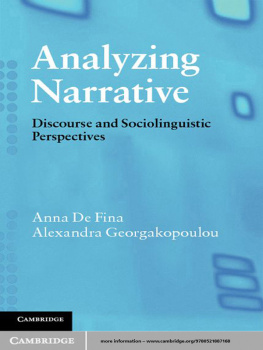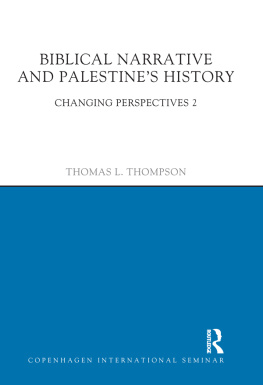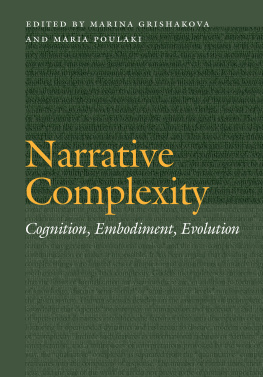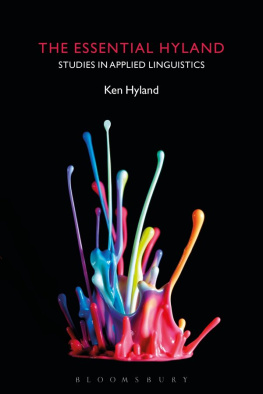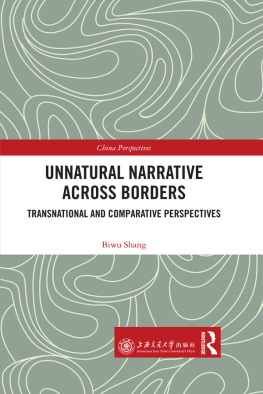Analyzing Narrative
The socially minded linguistic study of storytelling in everyday life has been rapidly expanding. This book provides a critical engagement with this dynamic field of narrative studies, addressing long-standing questions such as definitions of narrative and views of narrative structure but also more recent preoccupations such as narrative discourse and identities, narrative language, power and ideologies. It also offers an overview of a wide range of methodologies, analytical modes and perspectives on narrative from conversation analysis to critical discourse analysis, to linguistic anthropology and ethnography of communication. The discussion engages with studies of narrative in multiple situational and cultural settings, from informalintimate to institutional. It also demonstrates how recent trends in narrative analysis, such as small stories research, positioning analysis and sociocultural orientations, have contributed to a new paradigm that approaches narratives not simply as texts, but rather as complex communicative practices intimately linked with the production of social life.
Anna De Fina is Associate Professor of Italian Language and Linguistics at Georgetown University.
Alexandra Georgakopoulou is Professor of Discourse Analysis and Sociolinguistics at Kings College London.
CAMBRIDGE UNIVERSITY PRESS
Cambridge, New York, Melbourne, Madrid, Cape Town, Singapore, So Paulo, Delhi, Tokyo, Mexico City
Cambridge University Press
The Edinburgh Building, Cambridge CB2 8RU, UK
Published in the United States of America by Cambridge University Press, New York
www.cambridge.org
Information on this title: www.cambridge.org/9780521715133
Anna De Fina and Alexandra Georgakopoulou 2012
This publication is in copyright. Subject to statutory exception and to the provisions of relevant collective licensing agreements, no reproduction of any part may take place without the written permission of Cambridge University Press.
First published 2012
Printed in the United Kingdom at the University Press, Cambridge
A catalogue record for this publication is available from the British Library
Library of Congress Cataloguing in Publication data
De Fina, Anna.
Analyzing narrative : discourse and sociolinguistic perspectives /
Anna De Fina, Alexandra Georgakopoulou.
p. cm.
Includes bibliographical references and index.
ISBN 978-0-521-88716-8 ISBN 978-0-521-71513-3 (pbk.)
1. Narration (Rhetoric) 2. Discourse analysisSocial aspects.
3. Sociolingusitics. I. Georgakopoulou, Alexandra. II. Title.
PN212.D4 2012
808.036dc23
2011040409
ISBN 978-0-521-88716-8 Hardback
ISBN 978-0-521-71513-3 Paperback
Cambridge University Press has no responsibility for the persistence or accuracy of URLs for external or third-party internet websites referred to in this publication, and does not guarantee that any content on such websites is, or will remain, accurate or appropriate.
Acknowledgments
This book is the result of many years of collaboration between us, but our work has also benefited immensely from the open dialogue that we have established throughout the years with colleagues and students. We would like to extend our thanks for their participation and critical insights to colleagues and audiences in the various conference panels that we have organized in both continents over the years. We are particularly grateful to Molly Andrews, Michael Bamberg, Mike Baynham, Jan Blommaert, Arnulf Deppermann, Mark Freeman, Matti Hyvrinen, Cathy Riessman, Deborah Schifrrin, Stef Slembrouck, Corinne Squire and Stanton Wortham for many a constructive exchange. We also want to thank all our students at Georgetown and at Kings College London, particularly those on the MA course in Linguistic Approaches to Narrative Analysis (Kings College London) for their critical engagement and enthusiasm. For help with the editing of this volume, special thanks to Leslie Cohran (Georgetown University) and to Anna Charalambidou (Kings College London). Helen Barton from Cambridge University Press showed much encouraging enthusiasm at the initial stages of this book, and we are indebted to her for that. To Inder, Emiliano and Silvio Ruprah, and to Alex, Eliana and Christopher Nunes, we continue to be grateful for unfailingly enriching our lives and making it all worthwhile.
Preface
Writing this book has been a wonderful, even though somewhat humbling experience. The idea for the volume was born out of a need for a language and discourse-oriented introduction to the field that we had identified as scholars and, more importantly, as teachers of narrative. We both felt that, although scholars from sociolinguistics, discourse analysis, linguistic anthropology, social and discursive psychology, just to name some of the fields covered in this book, had produced a vast body of research and theoretical reflection on narrative, a comprehensive and critical evaluation of their work was lacking. This was in stark contrast to the proliferation of textbooks and resource books that present sociological, cultural studies and literary approaches to narrative. Our aim was to redress the balance by highlighting the specificities of a language and discourse-focused perspective on narrative but also its important place within the narrative turn in the social sciences.
The journey of writing this book involved a great deal of discussion, reflection and rethinking as we navigated our way within a body of research that tends to be fragmented and dispersed and as, in the process, we had to make difficult decisions of selection, representation and even construction of coherence. Most of our transatlantic exchanges were made possible by the affordances of new technologies (with skyping playing a major role!), but this distance factor made the occasional face-to-face interactions even more rewarding and hugely anticipated. In the process of this intense intellectual engagement, not only did we need to rethink issues and questions posed by the books organization, but we also needed to explore meeting points in terms of our dissimilar narrative experiences and backgrounds, which had shaped our views about how to conceive of and analyze narratives. At the end of this process, we feel we have fundamentally grown together.
This book does not attempt to be exhaustive. Instead, it reflects our interest in two overarching themes that we believe have inadvertently shaped the development of language and discourse approaches to narrative: on the one hand, we focus on the investigation of narrative as textually and discursively constituted and organized. On the other hand, we highlight the analysis of storytelling as a social practice shaped by and shaping multiple social contexts. The latter are centered on different aspects of the relationship between narrative and social life. Another central concern of the volume is interaction. We emphasize the study of oral narratives told in interactional contexts at the expense of literary narratives, as we feel that the latter have been amply represented in the expansive narratological literature.
Overview of chapters
In we introduce some of the most debated questions related to the definition of narrative and some of the methodological differences between approaches. We review attempts at formalizing the study of narrative based on structural dimensions. In particular, we critically discuss the criteria that have been proposed within narratology and story grammars and the debates over the nature of narrativity. We also discuss attempts to look at narrative as a particular text-type and to distinguish it from other text-types. We then extend the overview to conceptions of storytelling that go beyond the search for punctual criteria but regard narrative as a mode, a frame for apprehending reality. We reflect on the narrative turn in the social sciences and on conflicting views of narrative as a mode of expression and knowledge, as an epistemology and as a method of inquiry. In the last section of the chapter, we review typologies that attempt to capture the different methodologies used in narrative research and we propose parameters that can be useful to distinguish between different orientations while also providing a guide for our readers in the classification and critical evaluation of the authors and trends presented in the book.

